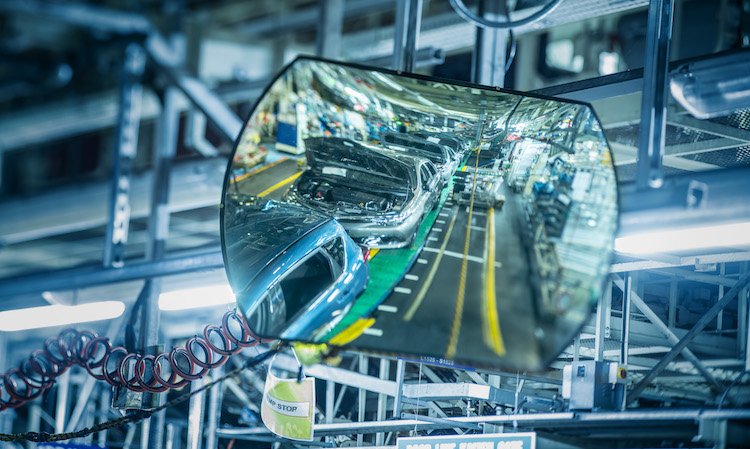Toyota’s ‘Kaizen’ principle of continuous improvement is inclusive of everyone in the organisation, empowering members to identify and suggest practical solutions that can improve the equipment and processes used to build every Toyota.
An example of Kaizen at work can be seen on the production line at Burnaston, where high-level mirrors are installed above the workstations. Team members realised that where they had to fit components spanning the width of the vehicle, they would have to physically move to ensure that the part was correctly located on both sides.
Consequently, they suggested adding mirrors on the opposite side of the line, so they can see clearly that a part has been correctly aligned and fitted. This simple solution improved efficiency by saving physical energy and precious seconds on the line.
“Adding mirrors saved precious seconds on the Toyota production line”
Toyota’s use of standardised work procedures – where the process is performed consistently in the same manner – enables its members to promptly identify areas where improvements can be made, no matter how small. And because the standardised work procedure is applied in any number of production facilities where the same task is performed, any improvements can similarly be rolled out throughout the wider Toyota organisation.
In the early days, Burnaston’s members benefited immensely from the assistance and training provided by Toyota coordinators from Japan who taught them the philosophy of Kaizen and how it it could be put to good use in the new factory. Over the past 25 years, Kaizen has become has become such a part of TMUK’s members’ mindsets that Toyota representatives visiting the plant are now learning ways of improving their own procedures, and taking the ideas back to Japan.
To discover more about TMUK at 25, see 25 Objects: Celebrating Toyota Manufacturing UK’s 25th anniversary




